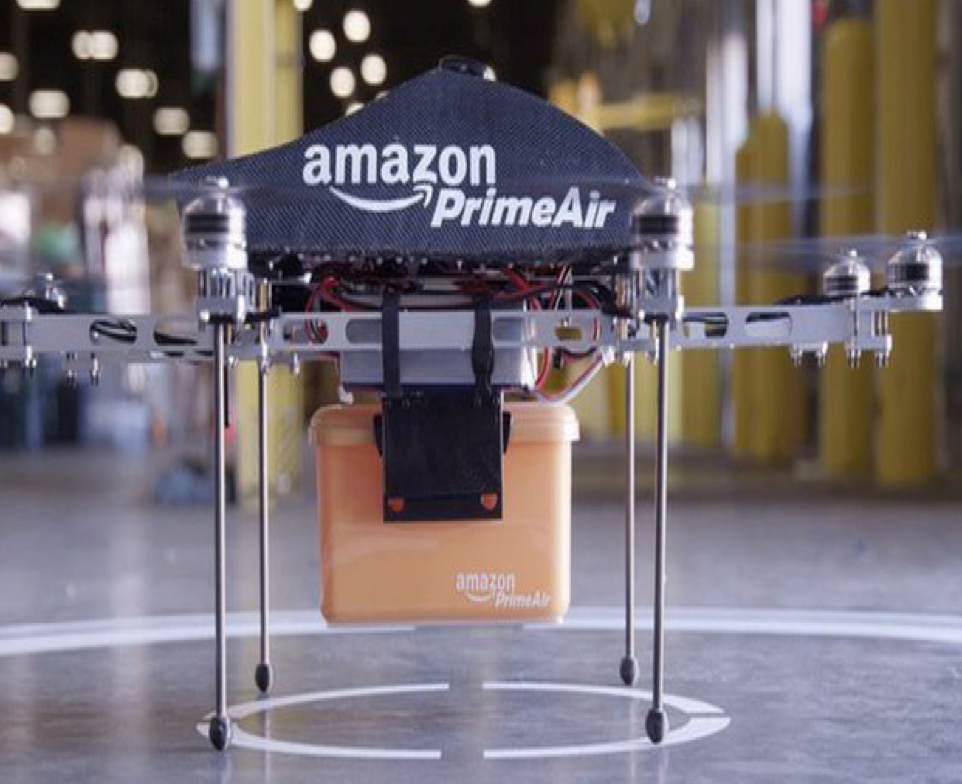Drones may deliver your pizza in the near future

The preliminary model for Amazon Prime Air, released last year, which could potentially deliver orders to consumers within a half hour of online purchase. Photo Credit: Gridd.com
By Morgan Patullo, Staff Writer
Drones, also know as unmanned aerial vehicles (UA V), are flying machines which can be controlled via remote, or fly on their own using software-controlled flight plans working with GPS. Drones can be used for many purposes. Originally associated with the military, they are now used for search and rescue, surveillance, traffic and weather monitoring, and much more.
On August 28, Google revealed Project Wing. In their video, they showed a half plane, half helicopter aircraft using a 200-foot fishing line to deliver dog treats to a farmer in Queensland, Australia. Could this be the future of delivery services for the United States? Amazon believes it could be. Late in 2013, Amazon revealed Prime Air, which the company states could one day deliver packages to customers within half an hour of orders.
However, along with great delivery services may come a slew of problems. This technology has not been tested enough in populated areas, and the use of drones for commercial purposes is not yet permitted in the United States. Even if this rule changes, it is unclear if companies would be able to make a profit using this advanced technology to deliver everyday items to families.
Currently, researchers at NASA’s Moffett Field are developing a drone traffic management system, which will eventually be an air traffic control system for aircraft that fly around 400 to 500 feet in the air. This program will monitor weather and traffic, which will be especially important because drones weigh so little in comparison to aircraft. Additionally, they would establish no-fly zones, for example near major airports.
Dr. Parimal H. Kopardekar, a NASA principal investigator who is developing and managing the program, expects “the first commercial applications to be in agriculture and ‘asset monitoring,’ like keeping an eye on crops or remote oil pipelines.” He hopes they will have progress with agriculture within the next year and believes that, within five years, the services of drones will be even further extended to making deliveries to lightly populated areas.
Before any of this can occur, however, the Federal Aviation Administration will have to sign off on these small, unmanned air- craft performing commercial work. “There is the technology piece and then there is the public acceptance piece, and both have to evolve,” said Dr. Kopardekar. Last year, a Domino’s in England published a video of a drone delivering pizza, and this initiated a lot of excitement. However, it remains a publicity stunt. A Domino’s spokesman cleared things up saying that Domino’s is “not testing drone delivery.” Though, the future of the pizza deliveryman remains in question.
